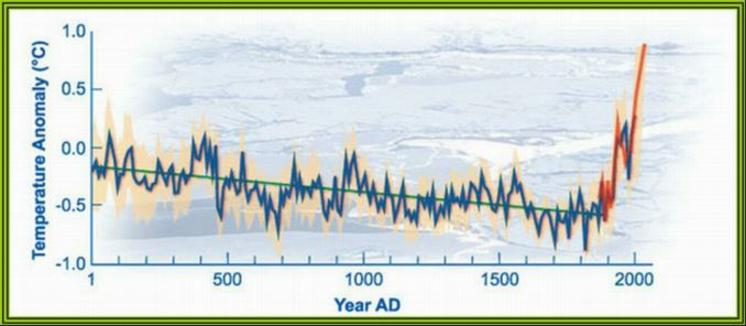From the London Independant, By Michael McCarthy, Environment Editor Monday, 22 February 2010
Atmospheric levels of methane, the greenhouse gas which is much more powerful than carbon dioxide, have risen significantly for the last three years running, scientists will disclose today – leading to fears that a major global-warming "feedback" is beginning to kick in.
For some time there has been concern that the vast amounts of methane, or "natural gas", locked up in the frozen tundra of the Arctic could be released as the permafrost is melted by global warming. This would give a huge further impetus to climate change, an effect sometimes referred to as "the methane time bomb".
This is because methane (CH4) is even more effective at retaining the Sun's heat in the atmosphere than CO2, the main focus of international climate concern for the last two decades. Over a relatively short period, such as 20 years, CH4 has a global warming potential more than 60 times as powerful as CO2, although it decays more quickly.
Now comes the first news that levels of methane in the atmosphere, which began rising in 2007 when an unprecedented heatwave in the Arctic caused a record shrinking of the sea ice, have continued to rise significantly through 2008 and 2009.
Although researchers cannot yet be certain, and there may be non-threatening explanations, there is a fear that rising temperatures may have started to activate the positive feedback mechanism. This would see higher atmospheric levels of the gas producing more warming, which in turn would release more methane, which would produce even further warming, and so on into an uncontrollable "runaway" warming effect. This is believed to have happened at the end of the last Ice Age, causing a very rapid temperature rise in a matter of decades.
The new figures will be revealed this morning at a major two-day conference on greenhouse gases in the atmosphere, taking place at the Royal Society in London. They will be disclosed in a presentation by Professor Euan Nisbet, of Royal Holloway College of the University of London, and Dr Ed Dlugokencky of the Earth System Research Laboratory in Boulder, Colorado, which is run by the US National Oceanic and Atmospheric Administration (NOAA).
"During the first half of 2009, globally averaged atmospheric CH4 was [approximately] 7ppb greater than it was in 2008, suggesting that the increase will continue in 2009. There is the potential for increased CH4 emissions from strong positive climate feedbacks in the Arctic where there are unstable stores of carbon in permafrost ... so the causes of these recent increases must be understood."
Professor Nisbet said at the weekend that the new figures did not necessarily mark a new excursion from the trend. "It may just be a couple of years of high growth, and it may drop back to what it was," he said. "But there is a concern that things are beginning to change towards renewed growth from feedbacks."
The product of biological activity by microbes, usually in decaying vegetation or other organic matter, "natural gas" is emitted from natural sources and human activities. Wetlands may give off up to a third of the total amount produced. But large amounts are also released from the production of gas for fuel, and also from agriculture, including the production of rice in paddy fields and the belches of cows as they chew the cud (which is known as "bovine eructation"). However, methane breaks down and disappears from the atmosphere quite quickly, and until recently it was thought that the Earth's methane "budget" was more or less in balance.
Methane in the atmosphere: The recent rise
Many climate scientists think that frozen Arctic tundra, like this at Sermermiut in Greenland, is a ticking time bomb in terms of global warming, because it holds vast amounts of methane, an immensely potent greenhouse gas. Over thousands of years the methane has accumulated under the ground at northern latitudes all around the world, and has effectively been taken out of circulation by the permafrost acting as an impermeable lid. But as the permafrost begins to melt in rising temperatures, the lid may open – with potentially catastrophic results.
Welcome to By 2100!
This Blog is designed to be a Diary of Events illustrating Global Climate Change, and where it will lead.
Commentary is encouraged, but this Blog is not intended for discussion on the Validity of Climate Change.
Category Labels
- Climate Events (85)
- Climate Solutions (45)
- Videos (42)
- Climate Statistics (39)
- The Deniers (34)
- Humour (15)
- Basic Information (5)
Subscribe to:
Post Comments (Atom)
www.know-the-number.com
Our Climate is Changing!Please download Flash Player.

No comments:
Post a Comment